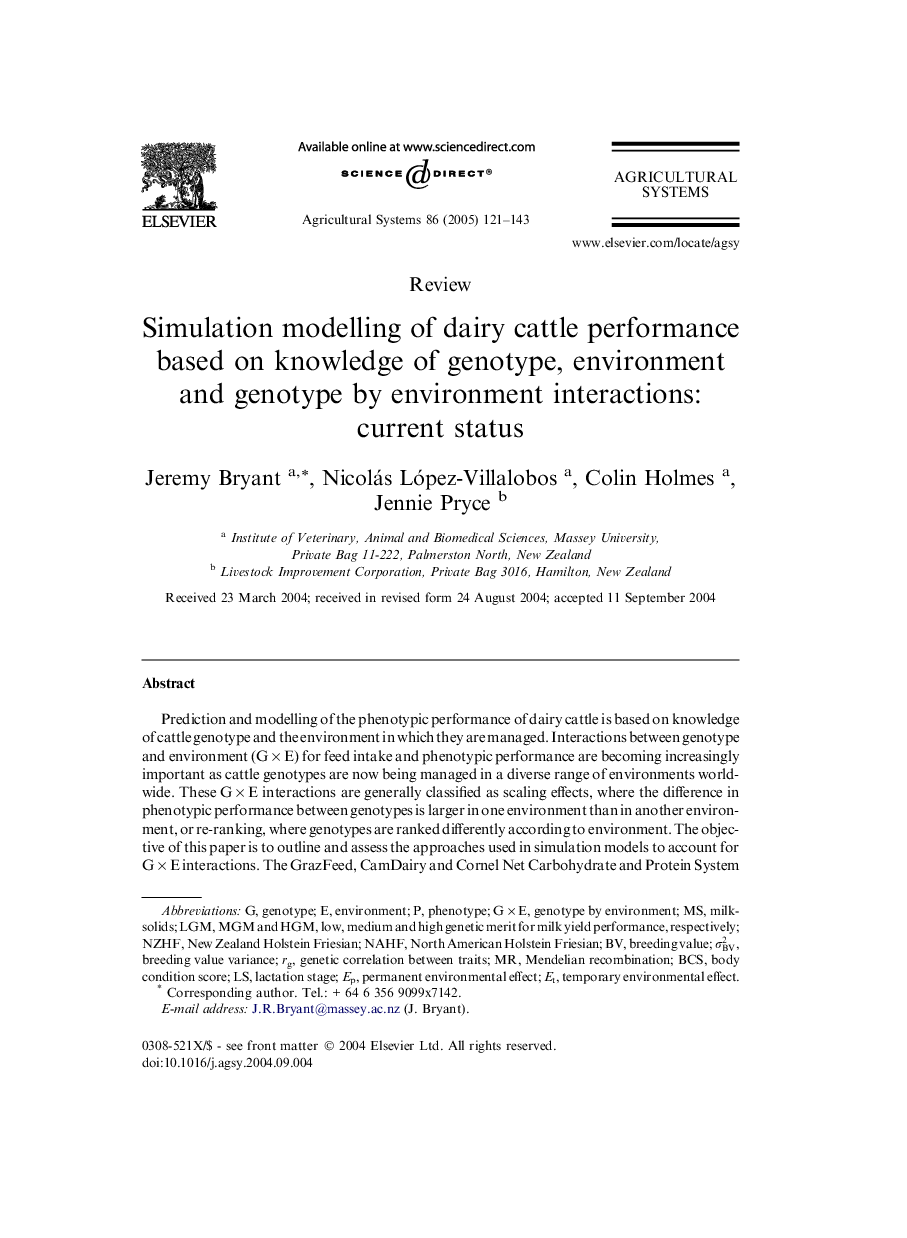| کد مقاله | کد نشریه | سال انتشار | مقاله انگلیسی | نسخه تمام متن |
|---|---|---|---|---|
| 9469158 | 1317903 | 2005 | 23 صفحه PDF | دانلود رایگان |
عنوان انگلیسی مقاله ISI
Simulation modelling of dairy cattle performance based on knowledge of genotype, environment and genotype by environment interactions: current status
دانلود مقاله + سفارش ترجمه
دانلود مقاله ISI انگلیسی
رایگان برای ایرانیان
کلمات کلیدی
G × E - G × EBreeding value - ارزش پرورشGenotype environment interaction - تعامل محیط زیستBCs - روند BCsSimulation - شبیه سازیPhenotype - فنوتیپEnvironment - محیط زیستLactation stage - مرحله شیردهیBody condition score - نمره وضعیت بدنPhenotypic plasticity - پلاستیک فتوتایپیGenotype - ژنوتیپgenotype by environment - ژنوتیپ به وسیله محیط زیستDairy cattle - گاو شیری
موضوعات مرتبط
علوم زیستی و بیوفناوری
علوم کشاورزی و بیولوژیک
علوم کشاورزی و بیولوژیک (عمومی)
پیش نمایش صفحه اول مقاله

چکیده انگلیسی
Prediction and modelling of the phenotypic performance of dairy cattle is based on knowledge of cattle genotype and the environment in which they are managed. Interactions between genotype and environment (GÂ ÃÂ E) for feed intake and phenotypic performance are becoming increasingly important as cattle genotypes are now being managed in a diverse range of environments worldwide. These GÂ ÃÂ E interactions are generally classified as scaling effects, where the difference in phenotypic performance between genotypes is larger in one environment than in another environment, or re-ranking, where genotypes are ranked differently according to environment. The objective of this paper is to outline and assess the approaches used in simulation models to account for GÂ ÃÂ E interactions. The GrazFeed, CamDairy and Cornel Net Carbohydrate and Protein System (CNCPS) simulation models are used as illustrative examples. Each model was used to quantify the phenotypic responses of different genotypes managed in a range of environments. These simulations highlighted the inability of these commonly used models to demonstrate re-ranking of genotypes, and to a lesser extent, to display scaling effects. This was largely due to their design, which resulted either in inadequate specification of animal genotype or a lack of interaction between the genetic and environmental components within each model. An environmental sensitivity trait, which is the derivative of phenotypic performance as a function of an environmental variable, could be a useful tool to develop a better understanding the phenotypic responses of specific genotypes. The environmental sensitivity trait could then be used, along with traditional estimated breeding values, to more accurately model the responses of animals to different environments.
ناشر
Database: Elsevier - ScienceDirect (ساینس دایرکت)
Journal: Agricultural Systems - Volume 86, Issue 2, November 2005, Pages 121-143
Journal: Agricultural Systems - Volume 86, Issue 2, November 2005, Pages 121-143
نویسندگان
Jeremy Bryant, Nicolás López-Villalobos, Colin Holmes, Jennie Pryce,